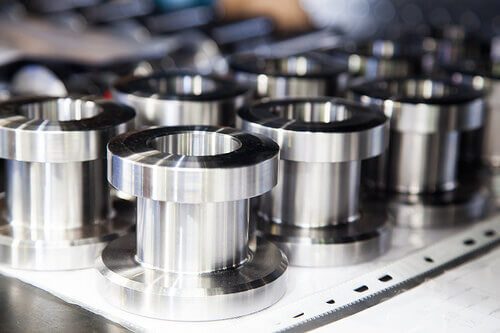
Some forms of analytics allow manufacturing firms to better understand their existing processes, but predictive analytics can forecast future performance. The Data Warehousing Institute, TDWI, defines predictive analytics as "a statistical or data mining solution consisting of algorithms and techniques" that can determine potential outcomes.
According to TDWI's 2014 report, at least thirty-four percent of manufacturing companies either use predictive analytics now or will use this form of analytics within three years. Although other industries have adopted predictive analytics faster, the manufacturing sector can benefit from this technology.
Predict Machine Breakdowns
One of the most compelling advantages that predictive analytics brings to manufacturing lies in its ability to monitor machinery and use past data to predict future breakdowns. According to The American Society of Mechanical Engineers, ASME, sensors in manufacturing equipment can keep track of "operational parameters and machine conditions."
Additionally, the ASME reports that sensors can send data to other devices. Through machine-to-machine communication, manufacturers can assess performance in real time and predict future problems. Future professionals with Executive MBA degrees can use their decision-making and problem-solving skills to interpret data from machinery and improve uptime.
Prevent Workplace Injuries
In addition to ensuring machine health, predictive analytics can also improve safety conditions in factories and throughout the supply chain. A report by the American Society of Safety Engineers, ASSE, asserts that workplace health and safety require proactive strategies. If employers can identify potentially hazardous situations, these business owners might prevent serious injuries and fatalities.
According to the ASSE, after a Fortune 150 manufacturer implemented predictive analytics, that firm reduced its lost-workday rate by ninety-seven percent in only twelve months. ASSE also suggests that predictive analytics can improve employee morale as well, citing as an example an employer's efforts to keep its workforce safe.
Reduce Operational Costs
While predictive analytics for machine uptime and workplace safety largely concern the factory floor, predictive technology can also have a positive impact on the supply chain. IndustryWeek senior editor Dave Blanchard notes that consumers have become more demanding with product delivery dates and shipping fees.
According to Blanchard, predictive analytics can show ways to speed up the supply chain and reduce the potential for delays. Companies can analyze Big Data, both structured and unstructured, to inform, reduce costs, and hasten deliveries. Blanchard also reveals that predictive analytics can bring down product failure rates. When fewer products fail, manufacturers can save money on supplies, materials, and warranty costs.
Writing for Cerasis, Adam Robinson adds that manufacturing companies can use predictive analytics to forecast demand. Using historical data, firms can identify consumer trends and prepare for changes in volume. Demand forecasting might prevent wasted time and resources and help the firm increase customer satisfaction rates.
Reduced costs, improved safety, and increased mechanical performance all suggest a promising future for predictive analytics. TDWI's report suggests that computer processing power has only recently reached the capacity necessary for effective data analysis, which could make this technology more accessible for manufacturers of all sizes. As predictive analytics becomes more mainstream, more firms will likely rely on this form of analytics to keep their businesses running smoothly.
To learn more about how understanding these developments can improve your business acumen, visit Washington State University online.
Resources:
https://www.sap.com/bin/sapcom/en_us/downloadasset.2014-03-mar-17-21.predictive-analytics-for-business-advantage-pdf.html
https://www.asme.org/engineering-topics/articles/technology-and-society/making-sense-of-sensors
http://www.asse.org/assets/1/7/WR_PredictiveAnalytics_1114.pdf
http://www.industryweek.com/supply-chain/predictive-analytics-let-manufacturers-see-more-clearly-their-supply-chains
cerasis.com/2016/03/16/predictive-analytics-in-manufacturing/
Photo courtesy of: https://www.flickr.com/photos/116341146@N06/19916773638/sizes/m/
